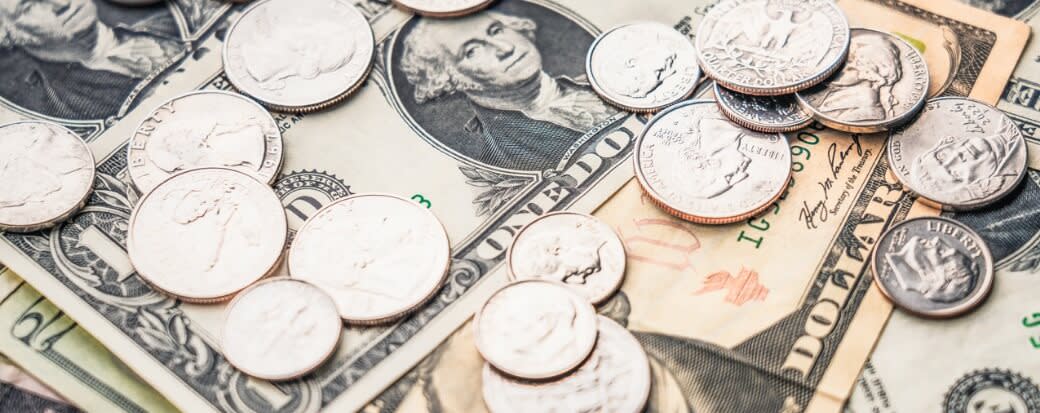The Coin Shortage: Understanding the Causes, Impact, and Solutions

A coin shortage is causing issues in the United States and is leading to some businesses refusing to accept cash payments, unless the customer is able to pay in exact change.
Coin shortages can affect both businesses and consumers and occur when there is a greater demand for coins than there are coins available. This can lead to banks, laundromats, retail shops, gas stations, and other essential businesses not having enough coins for their customers.
Let’s take a closer look at the current coin shortage and what caused the coin shortage.
What Is a Coin Shortage?
A coin shortage is a phenomenon in which there aren’t enough coins available in the marketplace to meet consumer demands. This can make it challenging for businesses to accept cash payments, as they may not have enough coins available to give the customer back after making a purchase. As a result, many businesses will only accept contactless payments unless the customer is able to pay in exact change.
Recommended: What Is a Cash Card?
What Causes a Coin Shortage?
The current coin shortage is being linked back to the coronavirus pandemic. When lockdowns occurred and businesses had to close their doors to customers, there was not as much opportunity for consumers to spend money by using cash or coins. Because of this, we currently don’t have as many coins circling through the economy — especially with digital payments becoming more popular than ever.
Another issue that arose during the pandemic was the U.S. Mint reduced how many coins they were producing in order to protect staff from the virus.
And finally, the Federal Reserve reports that consumers are generally depositing fewer coins at financial institutions like banks than they did in the past.
What Is the Impact of the Coin Shortage?
Coin shortages tend to mostly impact the consumers who wish to make purchases using physical cash. However, poorer individuals who rely on cash to make bill payments struggled, as well.
On the business side, this can hurt businesses that may lose a transaction if a customer has a desire to pay in cash. It’s more common to use cash for smaller transactions; however, there are fewer small transactions occurring due to merchants not being able to process them without adequate coin reserves.
Overall, the coin shortage causes inconveniences for both consumers and businesses alike. Consumers may spend time carefully considering a purchase only to be rejected at the cash register if they want to pay in cash. Businesses, on the other hand, can invest time and resources into making a sale only to realize they don’t have the ability to process it due to a lack of coins in their cash register.
Recommended: Guide to High-Yield Savings Accounts
What Is the Solution?
While there is technically a sufficient amount of coins in the economy right now, the goal is to help resume normal circulation patterns for U.S. coins that were disrupted during the pandemic years.
The Federal Reserve and U.S. Mint are hard at work trying to increase coin circulation. The initial step taken was to introduce a temporary cap in June 2020 to help keep the orders that depository institutions place with the Federal Reserve more evenly distributed. That way, there was a more even distribution of coins throughout the country. In July 2020, the U.S. Coin Task Force was created to work on tackling this issue.
It will take time, but it is estimated that as the economy continues to recover and more businesses open their doors again, that more coins will flow back into the marketplace.
There are also steps the average person can take to help end the coin shortage. One way is by cashing in the coins they’ve stored up for a rainy day. In fact, more than half of the coins in the U.S. are currently in the homes of consumers. A great way to get more coins back in the economy is to cash them in at local banks or use them to make purchases at businesses that still accept cash.
2025 Coin Shortage Update
There is no longer a nationwide coin shortage in 2025 — the U.S. has sufficient total coin inventory in circulation. Early disruptions during COVID‑19 were caused by flow issues — not a true lack of coins — and recent guidance indicates that mints and banks have resumed normal circulation patterns.
The Takeaway
A coin shortage occurs when there aren’t enough coins readily circulating throughout the economy. The U.S. economy was hit by a coin shortage in 2020 due to the economic effects of the coronavirus pandemic. Not only did many businesses have to shut their doors and limit cash payments, but consumers also scaled back their spending. All in all, this led to there not being enough coins in the marketplace, which limits some retailers’ abilities to accept cash payments from customers.
While a coin shortage can limit how easy it is to make payments in cash, customers can still make payments using other payment methods.
If you’re looking to open a new bank account, consider Lantern by SoFi. With Lantern, it’s easy to compare a handful of banks all at the same time, including interest rates on high-yield savings accounts, minimum balance requirements, and fees.
Compare high interest online savings accounts and find today’s best rate with Lantern.